Related Research Articles

The French Foreign Legion is a corps of the French Army that consists of several specialties: infantry, cavalry, engineers, airborne troops. It was created in 1831 to allow foreign nationals into the French Army. It formed part of the Armée d’Afrique, the French Army's units associated with France's colonial project in Africa, until the end of the Algerian war in 1962.

The Battle of Bir Hakeim took place at Bir Hakeim, an oasis in the Libyan desert south and west of Tobruk, during the Battle of Gazala. The 1st Free French Brigade under Général de brigade Marie-Pierre Kœnig defended the position from 26 May – 11 June against Axis forces of Panzerarmee Afrika commanded by Generaloberst Erwin Rommel. The Panzerarmee captured Tobruk ten days later.
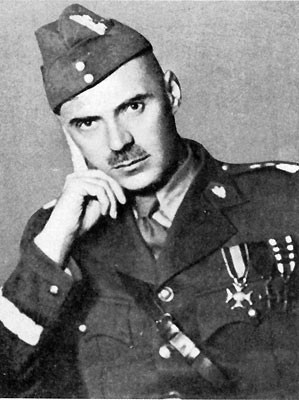
The Polish II Corps, 1943–1947, was a major tactical and operational unit of the Polish Armed Forces in the West during World War II. It was commanded by Lieutenant General Władysław Anders and fought with distinction in the Italian Campaign, in particular at the Battle of Monte Cassino. By the end of 1945, the corps had grown to well over 100,000 soldiers.

Operation Crusader was a military operation of the Western Desert Campaign during the Second World War by the British Eighth Army against the Axis forces in North Africa commanded by Generalleutnant Erwin Rommel. The operation was intended to bypass Axis defences on the Egyptian–Libyan frontier, defeat the Axis armoured forces and relieve the 1941 Siege of Tobruk.

The 90th Light Infantry Division was a light infantry division of the German Army during World War II that served in North Africa as well as Sardinia and Italy. The division played a major role in most of the actions against the British Eighth Army in the Western Desert Campaign and eventually surrendered to the Allies in the final stages of the Tunisia Campaign in May 1943. It was re-constituted later in 1943 and deployed to Sardinia and when the expected Allied invasion of Sardinia failed to materialise, the division was moved to Italy. It was engaged in actions against the Allies in Italy from 1943 to April 1945 when the division was listed as "destroyed" in the Po River valley.

The Battle of Camarón which occurred over ten hours on 30 April 1863 between the Foreign Legion of the French Army and the Mexican army, is regarded as a defining moment in the Foreign Legion's history.

The 2nd Foreign Parachute Regiment is the only airborne regiment of the Foreign Legion in the French Army. It is one of the four infantry regiments of the 11th Parachute Brigade and part of the spearhead of the French rapid reaction force.
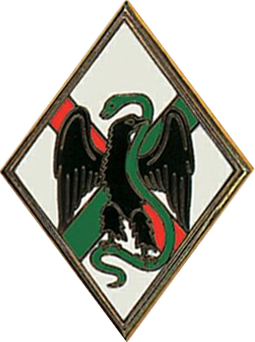
The 1st Foreign Regiment and the 2nd Foreign infantry Regiment are the original and most senior founding regiments of the Foreign Legion in the French Army.

The 13th Demi-Brigade of Foreign Legion, was created in 1940 and was the main unit of the 1st Free French Division, Free French Forces (FFL). From the coast of Norway to Bir Hakeim, to Africa then the Alsace, while passing by Syria and Italy, the 13th Demi-Brigade would be part of most of the major campaigns of the French Army during the Second World War.

The Foreign Legion has had a long and unique history amongst the units of the French Army. It was historically formed of expatriate enlisted personnel led by French officers. Founded by a royal ordinance issued by King Louis Philippe of France on March 9, 1831 with aim of bolstering the strength of the French Army while also finding a use for the influx of refugees inundating France at the time. The Foreign Legion subsequently found a permanent home in the ranks of the French military. The Foreign Legion's history spans across Conquest of Algeria, the Franco-Prussian War, numerous colonial exploits, both World Wars, the First Indochina War, and the Algerian War.
The 3rd Foreign Infantry Regiment is an infantry regiment of the Foreign Legion in the French Army. The regiment is stationed in French Guiana. Its mission includes the protection of the Centre Spatial Guyanais, a European Space Agency (ESA) facility.

The 2nd Foreign Infantry Regiment is an infantry regiment of the Foreign Legion in the French Army. The regiment is one of two mechanized infantry regiments of the 6th Light Armoured Brigade.
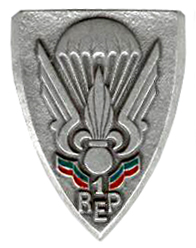
The 1st Foreign Parachute Regiment was an airborne regiment of the Foreign Legion in the French Army which dated its origins to 1948. The regiment fought in the First Indochina War as the three-time reconstituted 1st Foreign Parachute Battalion, the Suez Crisis and Algerian War, but was dissolved along with the 10th Parachute Division and 25th Parachute Division following the generals' putsch against part of the French government in 1961.
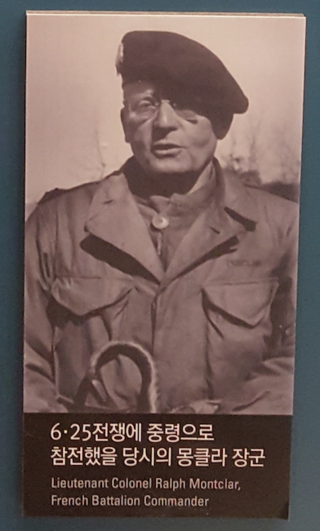
Raoul Charles Magrin-Vernerey, also known as Ralph Monclar was a French officer and 2nd Inspector of the Foreign Legion who fought in World War I, World War II within the ranks of the Free French Forces and led the French Battalion in the Korean War. He was also one of the first senior officers to respond to the Appeal of 18 June.

The Battle of Point 175 was a military engagement of the Western Desert Campaign that took place during Operation Crusader from 29 November – 1 December 1941, during the Second World War. Point 175 is a small rise just south of the Trigh Capuzzo, a desert track east of Sidi Rezegh and south of Zaafran, with a good view of the vicinity. In early November 1941, the feature was held by German infantry of Division z.b.V. Afrika. Troops of the 2nd New Zealand Division and Infantry tanks of the 1st Army Tank Brigade attacked and captured Point 175 on 23 November, during the Battle of Sidi Rezegh, at the start of Operation Crusader. The New Zealand troops then attacked westwards and made contact with the Tobruk garrison, which had broken out to meet them. From 29 November – 1 December, the New Zealanders defended the point and the area to the west against Axis attempts to sever the link with the Tobruk garrison and regain control of the local roads. The new 132nd Armoured Division Ariete re-captured Point 175 late on 29 November.

The 6th Foreign Infantry Regiment was an infantry regiment of the Foreign Legion in the French Army from 1939 to 1941 and again from 1949 to 1955.
The 11th Foreign Infantry Regiment was a regiment of the Foreign Legion in the French Army which served during World War II from 1939 to 1940.
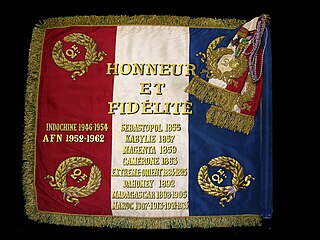
Honneur et Fidélité is the motto of the Foreign Legion in the French Armed Forces. It has been inscribed on Legion flags instead of the Honneur et Patrie inscribed on flags of the regular French Army of the French Republic. Nevertheless, both mottos share a similar past.
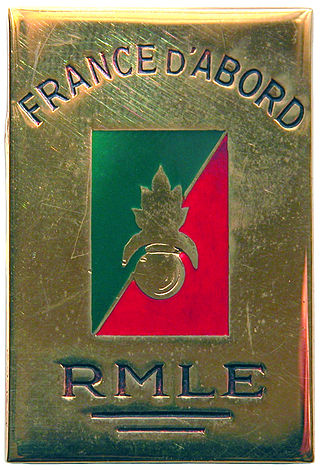
The Marching Regimentof the Foreign Legion (RMLE) was a French military unit that fought in World War I and World War II. Initially composed of marching regiments from the 1st Foreign Regiment of Sidi Bel Abbes and the 2nd Foreign Infantry Regiment of Saida, Algeria, it re-formed as the 3rd Foreign Infantry Regiment.
The Foreign Legion was established in 1831 by King Louis Philippe I to consolidate all foreign corps fighting under French colors, which included, among others, the Swiss Guards, the Swiss regiment of the Royal Guard, and the Hohenlohe Regiment. After its creation, the Legion participated in the further recruitment of foreign nationals into French military service.
References
- ↑ Porch 1991, p. 489.
- 1 2 Porch 1991, p. 490.
- ↑ https://www.awm.gov.au/collection/C1417191
- ↑ https://nzetc.victoria.ac.nz/tm/scholarly/tei-WH2Tobr-c25.html
- ↑ https://nzetc.victoria.ac.nz/tm/scholarly/tei-WH2-18Ba-c15.html
- ↑ https://robertlyman.substack.com/p/the-harsh-realities-of-combat?
- ↑ https://rommelsriposte.com/2009/02/08/batallion-kolbeck-the-wrong-tool-for-the-job-on-ed-duda/
Bibliography
- Porch, Douglas (1991). The French Foreign Legion: A Complete History. London: Macmillan. ISBN 0-333-43427-7.